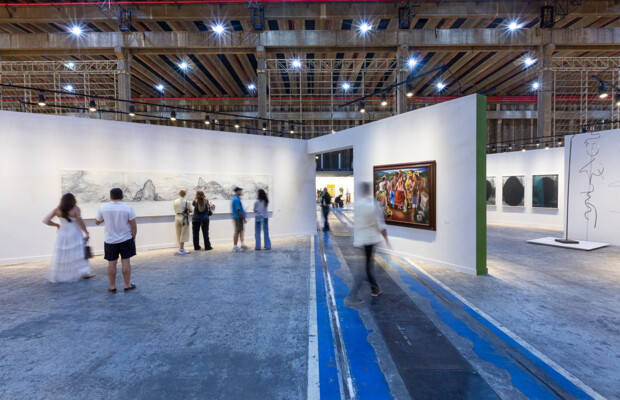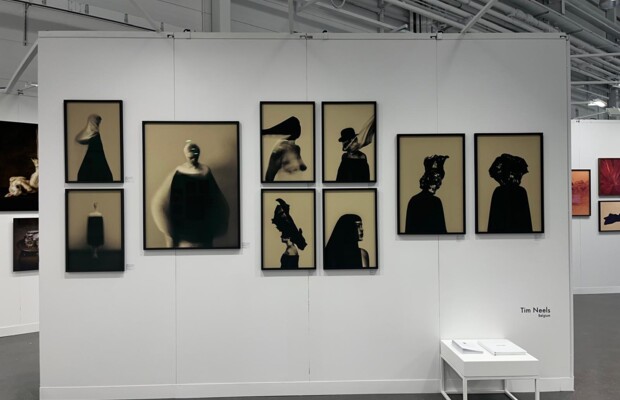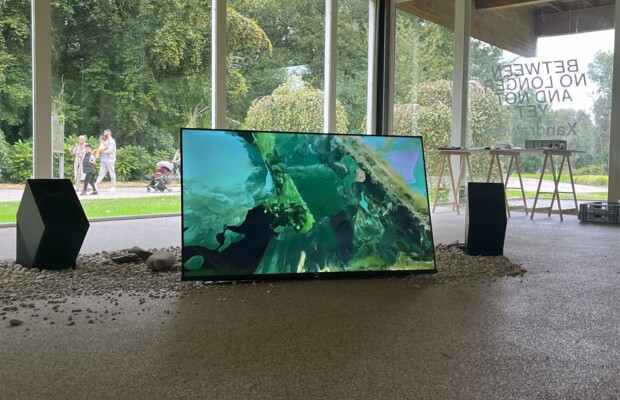Biennale of Sydney 2024: Ten Thousand Suns
Around the world, in 2024, more than half of the population will cast ballots in what The Economist has dubbed "the biggest election year in history" - more than 70 countries (including the US, UK, India, Bangladesh, Pakistan, Mexico, Brazil, Indonesia, Russia, and Taiwan) - with democracy itself occasionally on the ballot. The Year of Elections has been designated for 2024. It could lead us to the unsettling conclusion that democracy is seriously declining. In 76 countries, this will be the largest test democracy has ever faced. Many may consider this a victory for democracy, as more people worldwide than ever before will cast ballots in a single election.
Since the Second World War, most people agree that a democracy cannot function properly without the freedom of expression. However, once more, less than 8% of the world's population resides in a "full democracy," which is defined as a society in which "civil liberties and fundamental political freedoms are not only respected but also reinforced by a political culture conducive to the thriving of democratic principles." This is according to The Economist's most recent Democracy Index.
Due to deadly conflicts in the Middle East and Ukraine as well as the rise of authoritarian elected regimes, freedom of speech in the public and private spheres - including the visual arts - is coming under more and more assault. For this reason, it is even more crucial than before that artists and other professionals strive to raise awareness of global issues among all people. Biennales and other similar events have been vociferous and have been emphasising these global issues.
The 24th Biennale of Sydney, a vibrant and engaging programme including 400 artworks by 96 artists and collectives, is celebrating its 50th anniversary this year. Ten Thousand Suns, the name of this year's event, has begun on March 9 and will be running until June 10, 2024. It aims to refute fatalistic Western depictions of the end of the world. Naturally, a concept these expansive needs room to expand, which is why the 2024 programme is spread out over multiple locations in Sydney. There are Biennale works on display at the Art Gallery of New South Wales, Artspace, Chau Chak Wing Museum at the University of Sydney, Museum of Contemporary Art Australia, Sydney Opera House, UNSW Galleries and the recently restored White Bay Power Station, which is now open to the public for the first time in 100 years. The Biennale of Sydney is showcasing a three-month exhibition together with a free public programme of artist talks, performances, discussions, family events, guided tours, and other special events. A contemporary music programme is offered in conjunction with the exhibition at Phoenix Central Park. The programme responds to the artwork on display and enhances the theme chosen by the biennale's artistic directors.
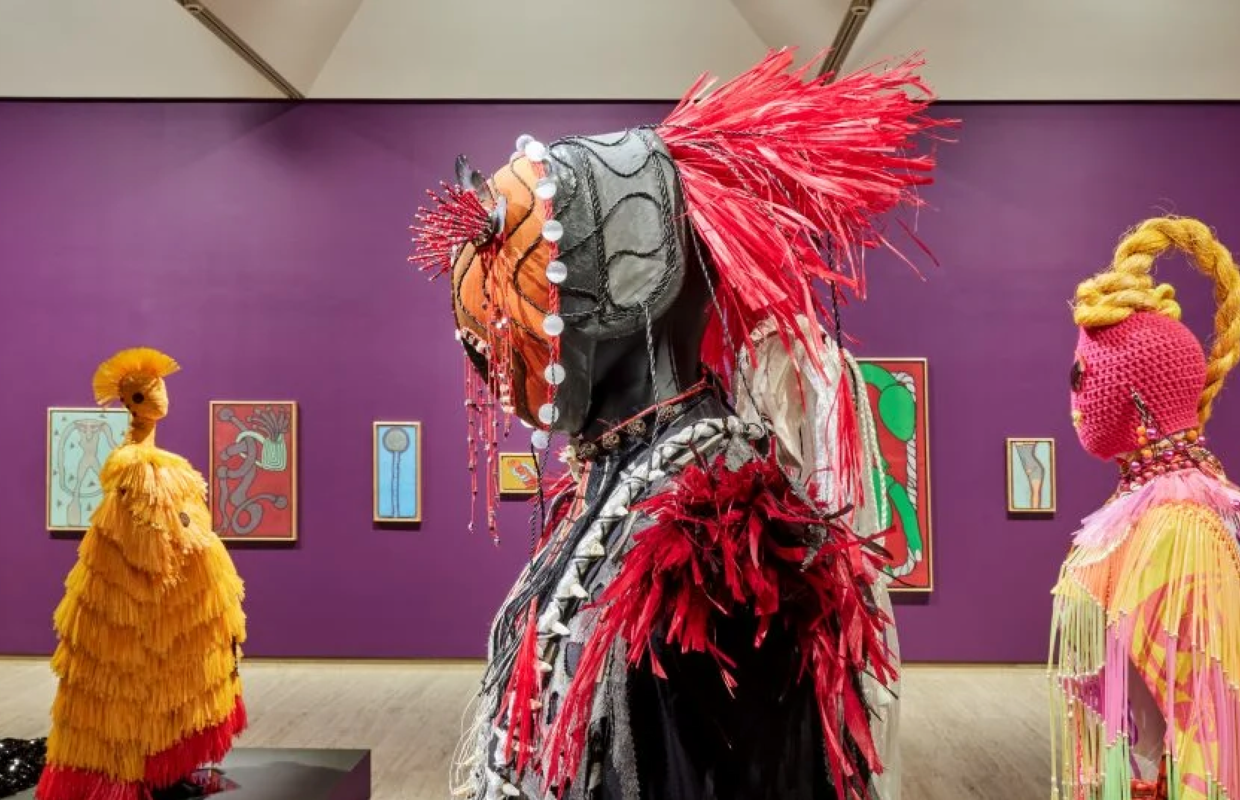
The inaugural Biennale of Sydney was staged in 1973 to provide an international showcase for contemporary art. Its aim was to develop and present a programme that challenged traditional thinking and encouraged new levels of enthusiasm for innovative creative expression, includes the right to free speech. It was the first biennale to be established in the Asia-Pacific region and, alongside the Venice and São Paulo biennales and Documenta, is one of the longest running exhibitions of its kind. Today, it ranks as one of the world’s international festivals of contemporary art and continues to be recognized for showcasing the freshest and most provocative art from Australia and around the world. Since its inception, the Biennale of Sydney has showcased from over 100 countries. In Australia, it is the only free festival of any scale, offering free programs and free educational resources. The biennial’s charter is to provide fresh curatorial perspective and independent artistic vision and to act as a counterbalance to traditional institutionally driven programmes, exhibitions and publications. The Biennale’s exhibitions, education and public programmes, artists’ residencies and publications act as a cultural catalyst by encouraging innovation, experimentation and the communication of ideas. Biennale of Sydney is an occasion that always has deeply conveyed a powerful global message to its attendees, increasing global consciousness of the world's significant processes.
Under the direction of Cosmin Costinaş and Inti Guerrero, the 24th Biennale of Sydney promotes celebration as a means as well as a source of delight, generated in a collective and widely shared way. The event, which centres around a modern art exhibition, draws inspiration from past accounts of LGBT resistance and communities banding together to thrive in the face of injustice. The HIV/AIDS epidemic, trade routes and their impact on global advancements, the processes of extracting minerals in relation to the material world, the exploitation of plantation farming and its impact on environmental changes, nuclear weapons, radiation, cultural diversity, the Islamic world, and how these topics are transforming people and the world's civilizations are all discussions covered at the Biennale. The history of colonial violence and the fact that geographical distance exacerbates power disparities between local artists and those closer to more affluent consumers have both been highlighted. In addition to highlighting the mechanical notion of revolution and its political past, the breadth of political issues and art's aspirations for a role in political change also offer a relevant examination of people understandings, desires for, activations of, and use of change - both in the world and in art.
Artistic Directors Cosmin Costinaș and Inti Guerrero have said:
Biennale works across time periods, beyond the borders separating cultural practices rooted in different genealogies, and from all continents. The exhibition owes a profound debt to the rich heritage of what is known today as Australia, especially to the struggles and practices in which First Nations communities and migrants have faced and played key roles. The 24th Biennale of Sydney invoke a spirit of abundance and generosity as powerful political tools and resist the mainstream mindsets of perpetual crisis that often lead to inaction. This edition revisits legacies of collective resistance, strength, and exuberance, embracing a more hopeful and joyful outlook, while celebrating the exhibition as a carnival of rays and radiance, aptly titled Ten Thousand Suns.
Costinaș and Guerrero are frequent collaborators, and their exhibitions embrace the multiplicities of people’s viewpoints, reflected in the unique experiences and possibilities that art can provide, inviting people to challenge and be challenged, to learn and celebrate together. For the 24th Biennale of Sydney this year, Australia’s vibrant communities are central to their thinking, while seeing the Biennale as a place that reaffirms the urgency for international dialogue.
Cosmin Costinaș, a senior curator at Berlin’s House of World Cultures, and Inti Guerrero from Belgium’s Royal Academy of Fine Arts of Ghent, have curated a mammoth biennale. At the media preview, they told that while many of the works are indeed sombre or despairing and, in some cases, born out of harrowing experiences, humour and subversion are the exhibition’s artistic foils. “It’s not so much about victimhood or traumatic representations, but about using art to appropriate structures of oppression, such as colonialism,” Guerrero said.
At the forefront of this biennale is the idea that joy and celebration are not just forms of escapism; they can be forms of life affirmation and resilience,
“Inverting and subverting power structures to challenge colonialism.” Indigenous peoples have long understood non-human beings to be deserving of protection and care, and many of the standout works in this biennale attend to First Nation histories, knowledges and connections to land and water.
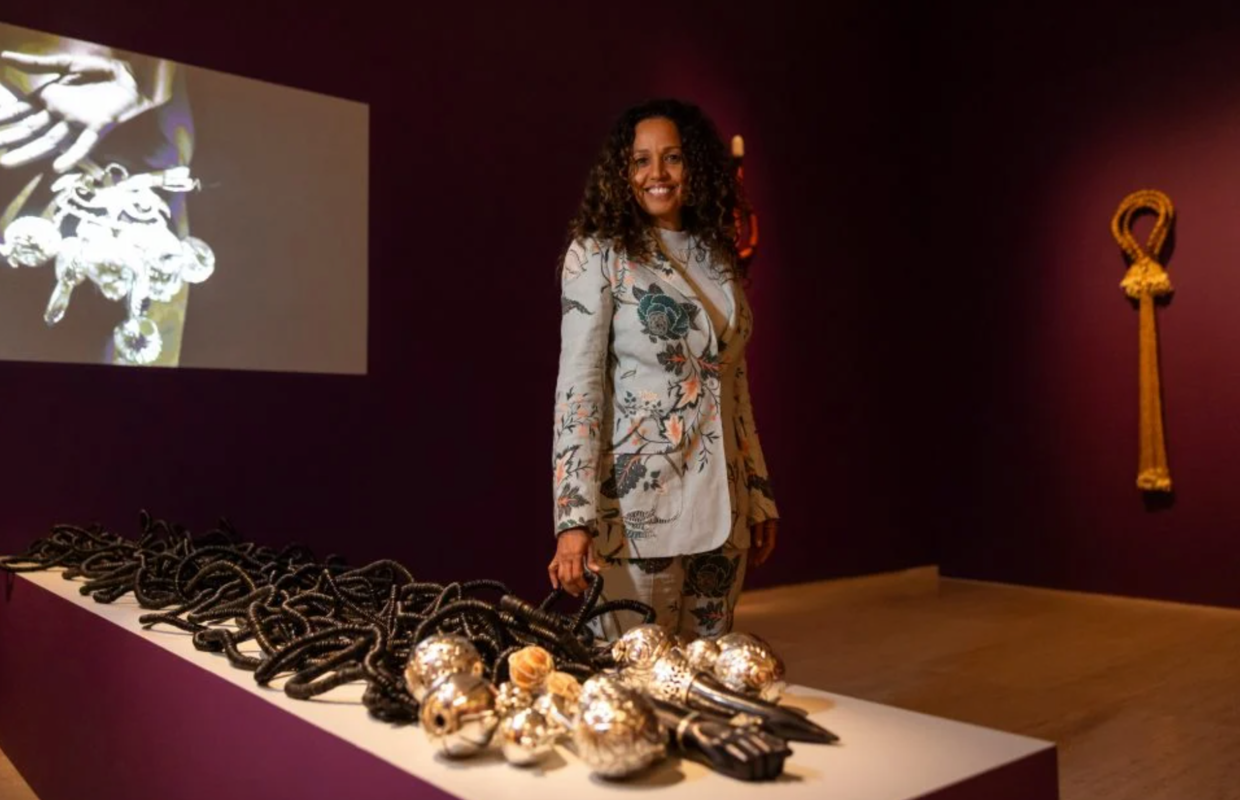
For example, Brazilian artist Nádia Taquary comes from a practice of jewellery making, and has migrated this into her art practice. Her intricately made gilded sculptures adorned with bronze and gold, feature elaborate glass beading that is related to West African traditions, and pay tribute to the complex heritage of her Afro-Brazilian culture. Her sculptures are beyond art, and are a way of creating images of the gods and goddesses, or orishas, in the Yorùbá religion of West Africa and several communities of the African diaspora.

But Darrell Sibosado is a Bard man whose practice explores the innovative potential of the riji(pearl shell) designs within a contemporary context, and his installation presents Indigenous knowledge and technology as one of the most resilient forces in this country. Passed down over countless generations, the designs represent the detached scales of Aalingoon, the Rainbow Snake. Commissioned by the Biennale of Sydney and Fondation Cartier pour l’art contemporain, Darrell extends cultural image making into this installation using the technologies of electricity and light to create a new neon work.

At Chau Chak Wing Museum, William Yang is presenting never before seen arresting photos of first generation of NAISDA dancers against the backdrop of the Sydney Opera House in 1976. The beautiful series shows the dancers bodies in relation to the architecture of the iconic building which was then only three years old. There’s an incredible contrast of deep time and experimental choreography captured by William in these photos.
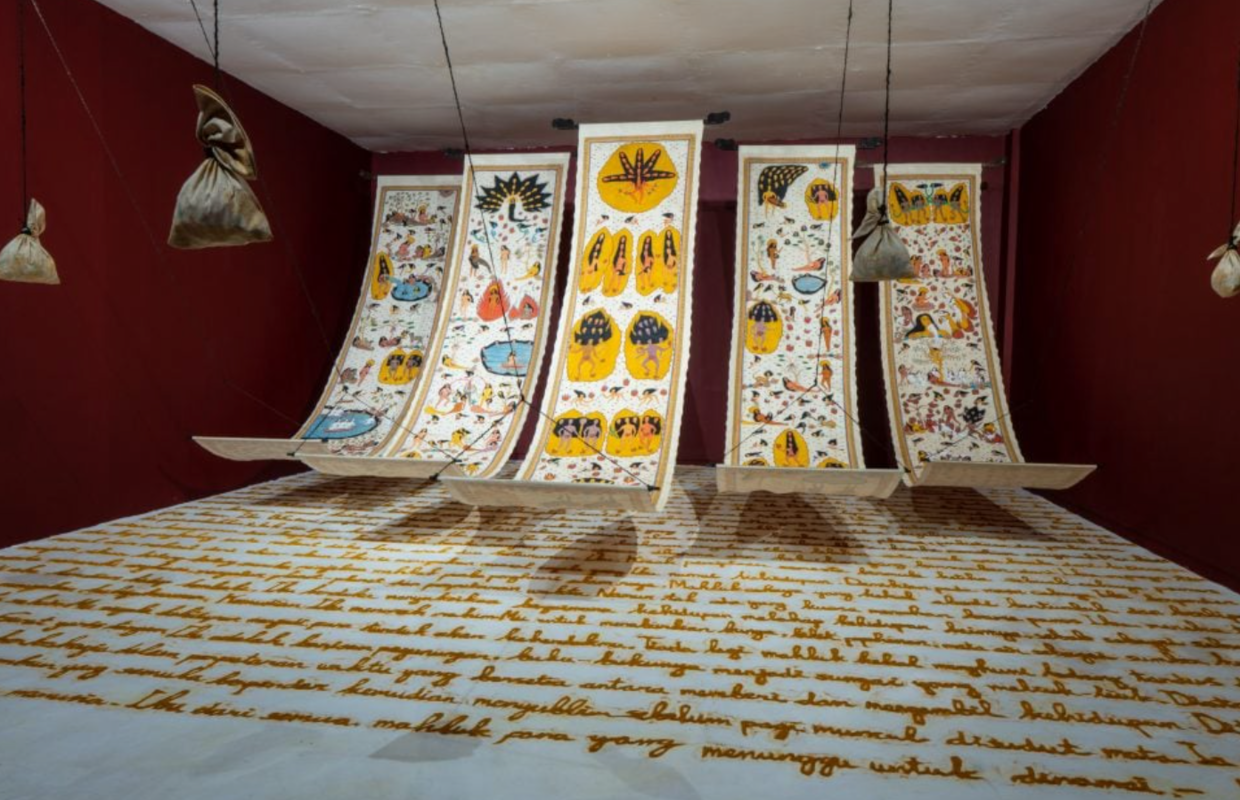
In the same time, Balinese artist Citra Sasmita's Kamasan-style paintings feature female characters inspired by Hinduism, Indonesian history, and her imagination. These women manifest in different forms - emerging from branches, with flames erupting from their bellies, or giant snakes coiling around their waist. Sasmita places them at the core of her narrative, displacing men and introducing depictions of women engaged in stories of conflict, creation, and empowerment. Samita extends her 'Timur Merah Project' (2019 - ongoing) to the Biennale. Describing it as “the embodiment of my resistance to Balinese cultural heritage that is heavily influenced by colonialism.”
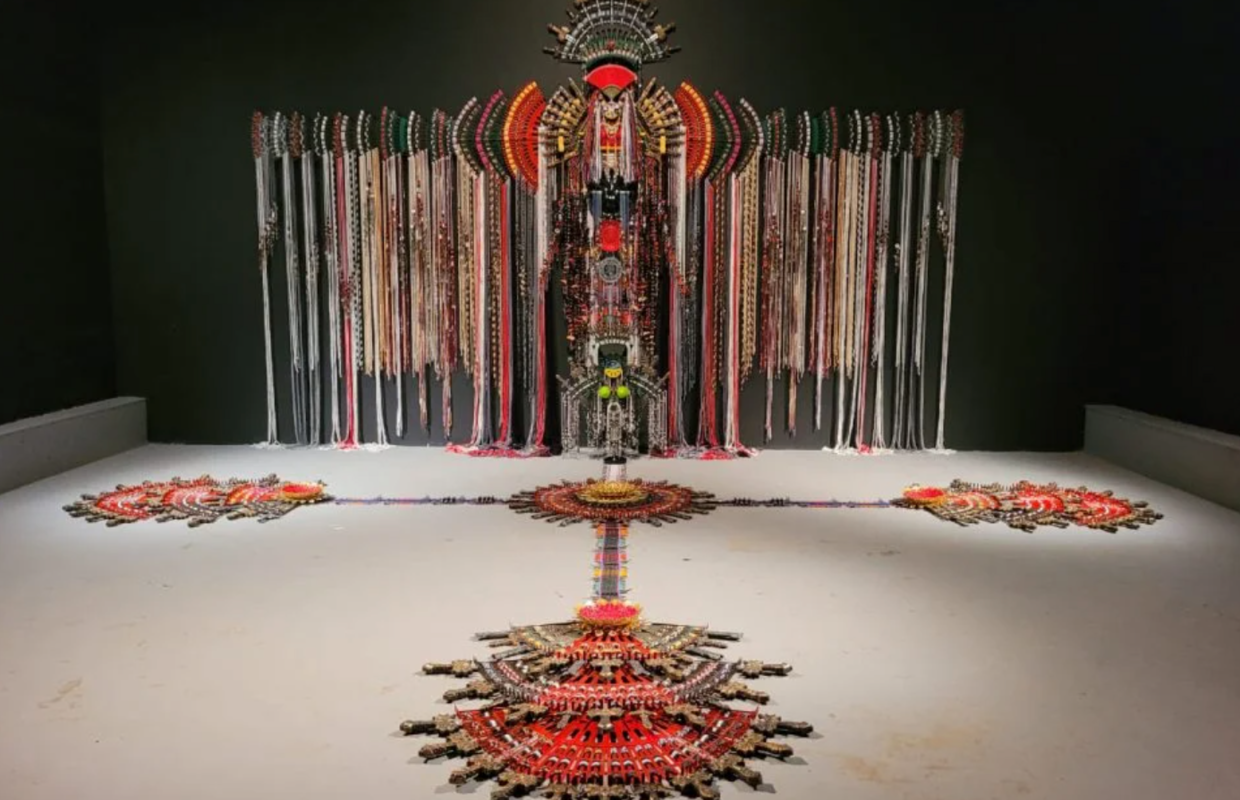
Malaysian artist Anne Samat debuts her latest commission, Cannot Be Broken and Won't Live Unspoken #2 (2024), an embellished totemic sculpture. Samat's sculptural work is known to challenge traditional art narratives while fostering a more inclusive and cross-cultural perspective. Crafted from traditional weaving techniques and everyday objects, they intertwine Indigenous Southeast Asian motifs such as Pua Kumbu (a weaving and dying technique used by the Iban people in Sarawak, Malaysia) with contemporary influences such as incorporating mass produced consumer goods. Spanning walls and spilling onto floors, Samat's large-scale, colourful creations initially resemble intricate tapestries woven from textiles. Closer inspection, however, reveals their surfaces are interrupted by household items such as forks, combs, and colanders. These carefully selected objects resonate with the personal nature of the artist's sculptures, deeply influenced by her life and relationships with family and friends.
Without a question, the 24th Sydney Biennale has provided a comprehensive explanation of the significance of Australia's indigenous population, who have been there for more than 65,000 years. And it has demonstrated the global indigenousness in relation to global advancements, procedures, occurrences, and historically significant choices. In-depth and varied depictions of the significance and meaning of the indigenous people in regard to the world, interpersonal connections and democracy have helped participants arrive at meaningful realizations, comprehensions, and conclusions. Hopefully this can be kept in mind and make influence when making decisions about geopolitics, economy, and lifestyle in the future.
Share the post:

